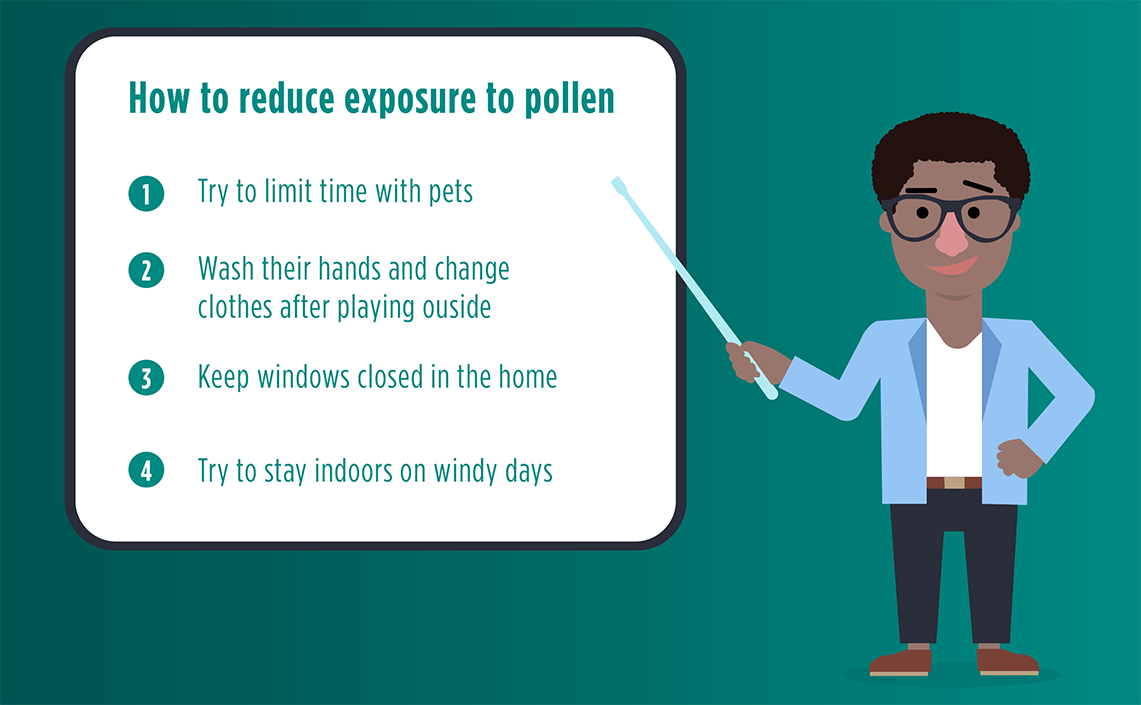KIDS AND BABIES
Hay fever for kids and babies
_
As a parent, you’re going to want answers when your little one gets sick for the first time. If you’re like most, you’re going to ask yourself if your baby has allergic rhinitis (also known as allergies) or rhinitis (also known as a cold). While children’s vulnerability to hay fever, or seasonal allergic rhinitis, varies from child to child, it generally takes time to develop.
Allergies normally start at two years
Very young children spend a lot of time indoors. As seasonal allergic rhinitis is caused by pollen, a home environment greatly reduces your child’s exposure to it. Plus, it takes some time for a child’s exposure to pollen to start developing into allergic rhinitis – generally at least two seasons – making this kind of ailment rather rare, but not totally unheard of, for one-year-olds.
As children grow, so can their chances of getting allergic rhinitis
Seasonal allergic rhinitis usually begins between the ages of two and five. It affects about 15% of children, peaks during school age, teenage years and into young adulthood. As your young child can hardly describe his or her symptoms, the trick is what to look for. The most obvious signs of a seasonal allergy, unlike an indoor or year-round allergy (most often due to dust mites or animal hair), is that the symptoms show up at the same time every year, then fade for up to ten weeks.
The symptoms of allergic rhinitis can look a lot like a common cold, meaning a running nose with clear mucus, itchy eyes, congestion, and sore throat. How does seasonal allergic rhinitis give itself away? Your child won’t run a fever, as in the case of a respiratory ailment. But what if your one-year-old’s nose is chronically congested? Look to other causes, such as a recurrent cold or lactose allergy. Food allergies are also often mistaken for nasal allergies in the very young. If you still have doubts, consult a Healthcare Professional, who can give you a heads-up of what your young child might be vulnerable to.

Ways to manage allergic rhinitis
Besides nose drops with a tolerant cleaning action, the first step should always be reducing pollen. How?
- Try to limit your child’s time with pets that have been roving outside. Pollen clings to their fur.
- Wash your child’s hands, and change their clothes, after they play outside.
- Keep windows closed in the home, especially in your child’s bedroom.
- Watch out for window fans. They draw pollen in from outside.
- Try to stay indoors on windy days, as the pollen count is much higher.
Once hay fever, always hay fever?
Generally, seasonal allergic rhinitis emerges during childhood or early adulthood. It tends to stay consistent but can reduce and increase – particularly when the child’s surroundings change. From age 20 onwards, symptoms tend to lessen – a long time to wait if your child has the sniffles now!
Ask your doctor today about what’s right for your little one.
Sources:
_
DID YOU KNOW?
A car’s air conditioner works miracles cleaning air filled with pollen. Don’t be shy to use it when travelling with your child.